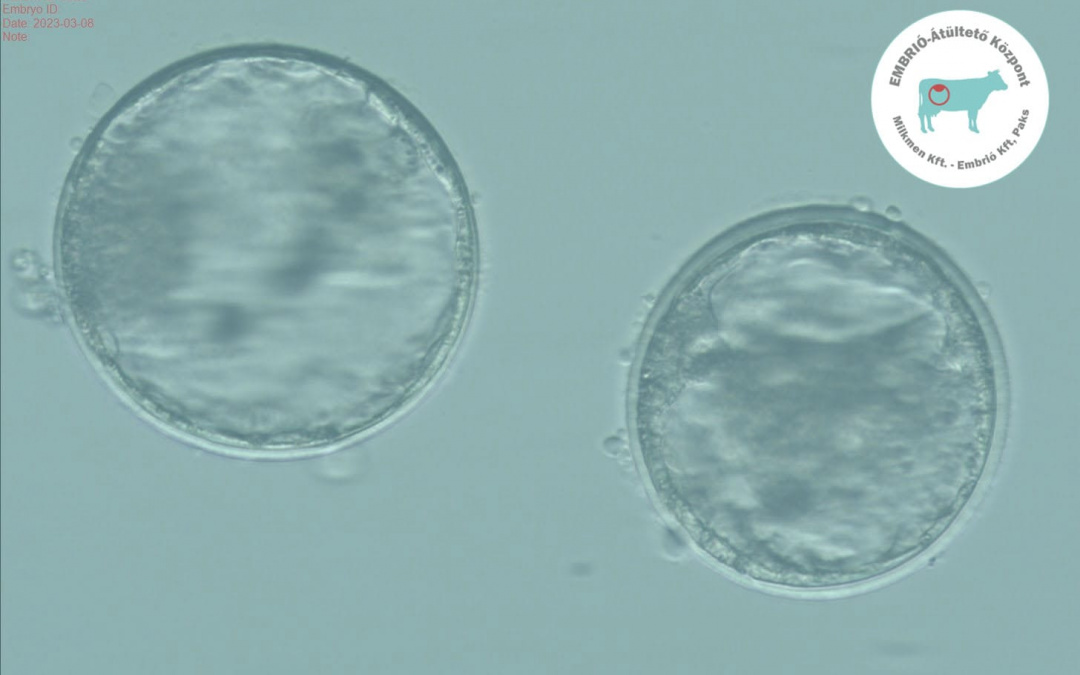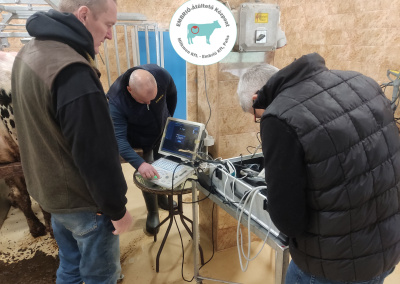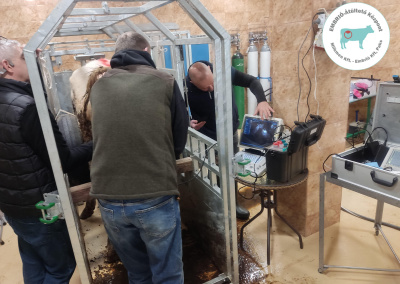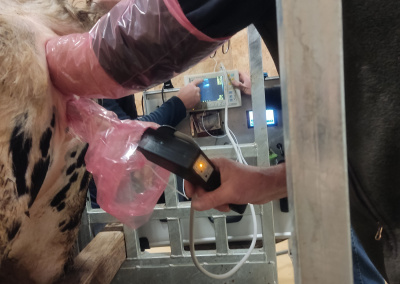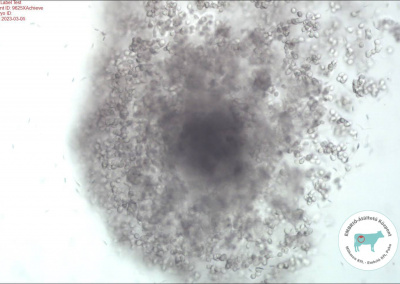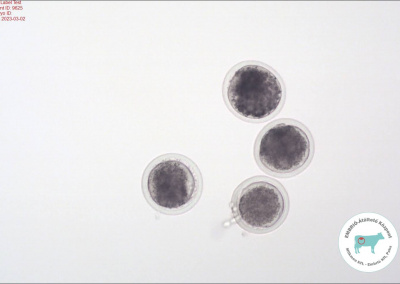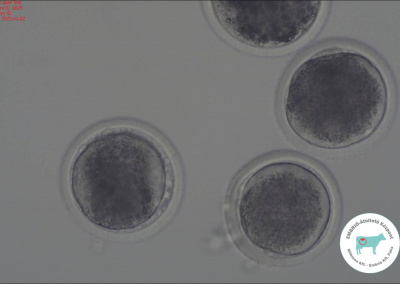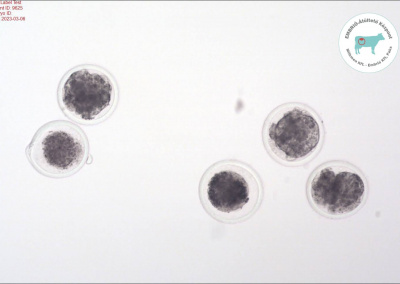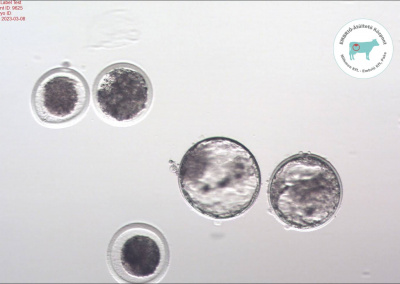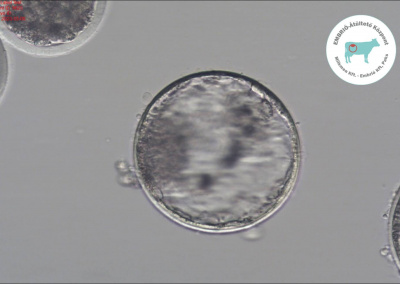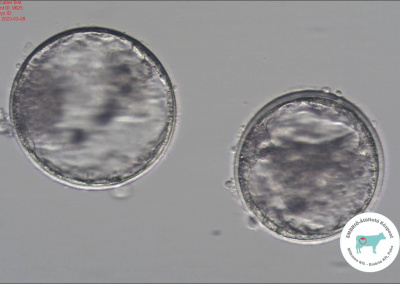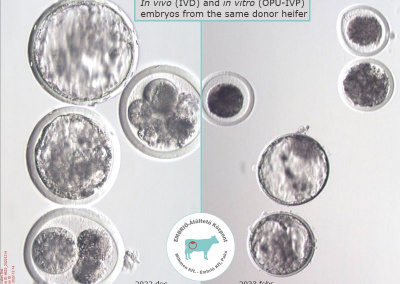After the IVF laboratory testing with slaughterhouse oocytes at the end of last year (which resulted 2 pregnancies), on February 28 we started a more hopeful and important activity, that is, oocyte collection from live animals. The procedure is called OPU, i.e. Ovum Pick-Up, aspiration of oocytes from visible follicles on the ovary through Transvaginal Ovum pick-up technique with the help of ultrasound scanner.
The donor heifers received minimal hormonal stimulation to recruit more number of follicles in to a growing pool from ovarian reserve. We got 17 oocytes out of them with the help of our colleagues Gyula Gyulay DVM and György Pénzes DVM. 7 were of first grade but we kept all 17 oocytes in IVM step.
After 21-24 hours of maturation we fertilized the matured oocytes with conventional semen and also with sexed semen. We denuded them on the third day, and then cultured for 6 days under optimal environment. The conditions were right, as were the steps of the process, because on the 7th day after IVF: 4 blastocysts were “smiled at us” under the microscope considering IVF day as day ‘0’. The 2 first greade and 2 second grade, but properly developed Holstein embryos were also freshly transfered into the synchronized recipients.
One of the donor heifer was already superovulated in December with the standard amount of FSH hormone and the embryos were flushed out after 7 days (MOET). Then we collect 4 structures from her in vivo, of which only two were transferable embryos. The same heifer now gave 2 good embryos out of 5 oocytes using much less hormone.
So the method, which already works routinely in many places around the world, can also be effective here. Although all parts of the process still require some development on our part, but according to our plans, the program will be followed by many similar ones and will take the leading role in our reproductive biology programs.
